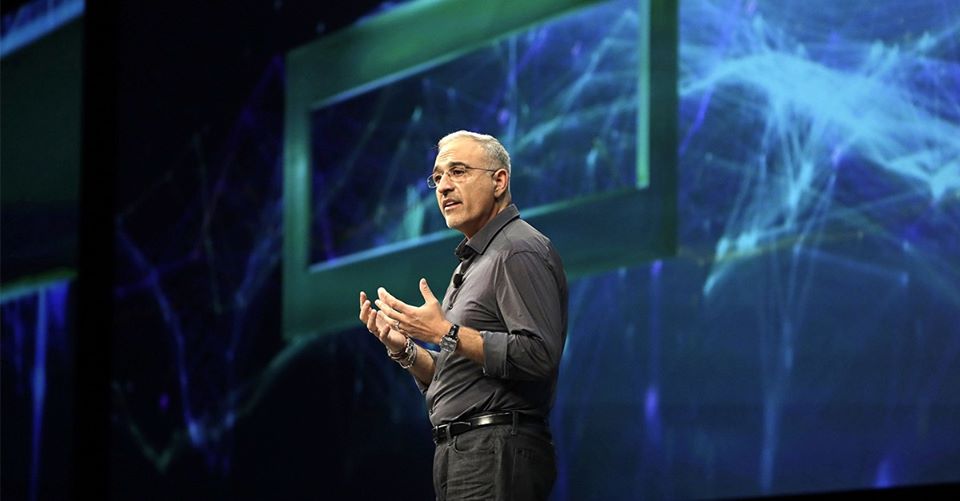 INFRA
INFRA
 INFRA
INFRA
 INFRA
INFRA
Hewlett-Packard Enterprise Co. and NetApp Inc. both managed to surprise Wall Street today, posting strong quarterly financial results that beat analysts’ expectations, even as the market for data center hardware continues to decline.
HPE also raised a few eyebrows with the news that it’s planning to relocate its corporate headquarters from San Jose, California, to Houston, Texas.
The company reported a fourth-quarter profit before certain costs such as stock compensation of 37 cents per share on revenue of $7.2 billion. That was comfortably ahead of Wall Street’s forecast of 34 cents per share profit on $6.88 billion in revenue.
HPE Chief Executive Antonio Neri (pictured) said the company had a “strong performance,” adding that it saw a “notable rebound” in its overall revenue, underscored by “acceleration in key growth areas.”
Those growth areas include the company’s High Performance Compute & Mission Critical Systems products, which saw revenue rise by 25% year-over-year, to $975 million. The Intelligent Edge business, meanwhile, which includes wired and wireless networking gear, saw revenue rise by 6%, to $786 million.
HPE’s traditional businesses didn’t fare quite so well, though. Compute revenue, which includes servers, fell 5%, to $3.2 billion, while Storage revenue declined 3%, to $1.2 billion. The company’s Professional Services revenue and Financial Services revenue also fell by 9% and 3%, respectively.
On the other hand, HPE’s storage revenue did rise 7% quarter-over-quarter, something that caught Moor Insights & Strategy analyst Steve McDowell by surprise.
“I didn’t expect that gain,” McDowell told SiliconANGLE. “HPE grew its storage business 7% quarter-over-quarter, out-performing Dell, which dropped 7% during the same period. It’s very unusual to see this big a divergence between these two companies in this sector.”
Neri said in a call with analysts that the quarterly gain shows how the COVID-19 pandemic is driving more business to the company.
“The global pandemic has forced businesses to rethink everything from remote work and collaboration to business continuity and data insight,” Neri said. “Over the last several months, customers have increasingly turned to HPE for our unique capabilities from edge to cloud that help them empower their workforces, deploy resilient new IT solutions and extract insights from critical data, while consuming these solutions more flexibly as a service.”
On the move to Houston, Neri said it makes sense because it’s the company’s largest U.S. area of employment.
“HPE’s largest U.S. employment hub, Houston is an attractive market to recruit and retain future diverse talent, and is where the company is currently constructing a state-of-the-art new campus,” he said. HPE will retain its Bay Area offices as a strategic hub for innovation, he added, and it’s not planning any layoffs.
McDowell told SiliconANGLE the move to Houston appears to make sense, coming at a time when tech companies are increasingly starting to realize they no longer need to be located in the Bay Area in order to compete. For one thing, HPE already has a very large footprint in the Houston area, which is where Compaq, a company acquired by Hewlett-Packard Co. in 2008, was originally based.
“A huge portion of HPE’s workforce is already based there, and it’s significantly more affordable than the Bay Area,” McDowell said. “There’s also the fact that Antonio Neri spent most of his career at HPE based in Houston, only coming to the Bay Area in 2015. He’s comfortable there.”
For its current fiscal 2021 first quarter, HPE expects earnings per share of 40 to 44 cents, above Wall Street’s consensus of earnings of 35 cents per share. The company also raised its full-year outlook to a range of $1.60 to $1.70 per share, above Wall Street’s estimate of $1.53 per share.
HPE’s shares fell about 1.4% in after-hours trading.
NetApp did even better, posting a second-quarter profit of $1.05 per share on sales of $1.42 billion, up 3.3% from a year ago. Wall Street was expecting the company to report earnings of just 73 cents on revenue of $1.32 billion.
The company’s stock rose almost 5% in after-hours trading.
NetApp CEO George Kurian also celebrated a “strong” performance, saying his company’s second quarter results were prove that it was successfully executing on its plan to scale its cloud business. He said the company was a “primary beneficiary” of the digital transformation activities of its customers.
NetApp’s software revenue jumped 14% from the same quarter one year ago, to $417 million. It now accounts for almost a third of the company’s total sales, helping offset an 18% decline in hardware revenue.
The company’s revenue from public cloud services topped $216 million on an annualized basis, up almost 75% from where it was one year ago.
“I am confident in our ability to drive long-term growth, extend our hybrid cloud leadership, and deliver value for customers, partners, and shareholders,” Kurian said prepared remarks.
For the third quarter, NetApp is forecasting earnings of 94 cents to $1.02 per share on revenue of $1.34 billion to $1.49 billion. Wall Street had forecast earnings of 91 cents per share on revenue of $1.37 billion.
McDowell said that NetApp’s strong performance, along with HPE’s, shows that strength is finally returning to the enterprise infrastructure market.
“NetApp and HPE today each help to solidify the trend that we detected from Nvidia, Dell and Pure Storage,” he said. “It was a good quarter for infrastructure vendors overall.”
Support our mission to keep content open and free by engaging with theCUBE community. Join theCUBE’s Alumni Trust Network, where technology leaders connect, share intelligence and create opportunities.
Founded by tech visionaries John Furrier and Dave Vellante, SiliconANGLE Media has built a dynamic ecosystem of industry-leading digital media brands that reach 15+ million elite tech professionals. Our new proprietary theCUBE AI Video Cloud is breaking ground in audience interaction, leveraging theCUBEai.com neural network to help technology companies make data-driven decisions and stay at the forefront of industry conversations.